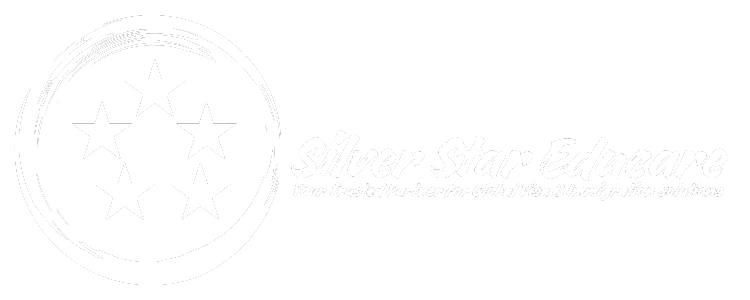- SCO 24-25, Second Floor, Sector 25D, Chandigarh
- contact@silverstareducare.com
- +91-8050200006
- Mon - Sat : 09:00 AM - 18:00 PM

Menu
A Comprehensive Guide for Indians Migrating to the USA: Formalities and Options
Related Post
Application Formalities: Simplifying the Process with Expert Guidance
Silver Star Educare: Your Trusted Partner in Education Abroad
13/04/2025
German Language Coaching at Silver Star Educare: Unlock New Opportunities
13/04/2025

Any Questions? Call us
+91-80502-00006
Any Questions? Email us
contact@silverstareducare.com

The United States of America has long been a dream destination for many individuals seeking better job opportunities, educational prospects, and a higher standard of living. With its diverse culture, world-renowned educational institutions, booming job market, and global influence, the USA attracts millions of migrants from all around the world, including India. If you’re considering migrating to the USA, it’s important to understand the formalities involved, the various immigration options available, and the steps required to start your journey.
In this blog, we will explore the different immigration pathways for Indians wishing to move to the USA, the formalities associated with each, and the application processes to help you navigate the complex U.S. immigration system.
Why Choose the USA?
Before diving into the details of the immigration process, let’s explore why the USA continues to be a top destination for Indian migrants:
-
Career Opportunities: The U.S. has a booming job market, particularly in sectors like technology, healthcare, finance, engineering, and education. With some of the world’s largest corporations headquartered in the U.S., skilled professionals have abundant job opportunities.
-
Top-Notch Education: The USA is home to some of the most prestigious universities and educational institutions in the world, making it an attractive destination for students seeking high-quality education and career advancement.
-
Cultural Diversity: The U.S. is a melting pot of cultures, offering a vibrant community with people from all over the world. Indian immigrants have made significant contributions to various sectors, and Indian communities are well-established in many major cities.
-
Innovation and Technology: The U.S. is a leader in technological innovation, making it an ideal destination for professionals in the tech industry, including software developers, engineers, and entrepreneurs.
-
Immigration Pathways: The U.S. provides multiple immigration pathways for people looking to live, work, and study in the country, making it possible for individuals with different backgrounds and skill sets to apply for permanent residency.
1. Family-Based Immigration
One of the most common pathways for Indian nationals to immigrate to the U.S. is through family sponsorship. If you have close relatives who are U.S. citizens or permanent residents, they can sponsor you for a family-based visa.
Eligibility for Family-Based Immigration:
-
Immediate Relatives: U.S. citizens can sponsor their spouse, children (under 21), and parents for permanent residency (Green Card). There is no limit to the number of visas available for immediate relatives.
-
Family Preference Categories: U.S. citizens and lawful permanent residents (Green Card holders) can also sponsor other family members such as siblings and adult children. However, these categories have annual caps, and the waiting period can be long, depending on the relationship and country of origin.
-
Application Process: The process involves the sponsor filing a petition (Form I-130) for the family member, followed by an adjustment of status or consular processing for the applicant. Once the petition is approved, the applicant may apply for a Green Card.
2. Employment-Based Immigration
The U.S. has a well-established immigration system for skilled workers, which includes multiple visa categories based on the applicant’s qualifications, skills, and job offers in the U.S.
Popular Employment-Based Visas:
-
H-1B Visa (Specialty Occupations): The H-1B visa is one of the most popular work visas for professionals in fields such as IT, engineering, healthcare, finance, and education. To qualify for this visa, applicants must have a job offer from a U.S. employer and possess a relevant bachelor’s degree or higher.
-
Eligibility: Applicants need a job offer from a U.S. employer who is willing to sponsor them. The employer must prove that the role requires specialized knowledge and that the applicant has the necessary qualifications.
-
Limitations: The H-1B visa is subject to annual caps, and there is a lottery system to determine who gets the visa due to high demand. Additionally, it is initially granted for three years, with the possibility of extension.
-
-
L-1 Visa (Intra-Company Transferee): The L-1 visa is available to employees of multinational companies who are being transferred to a U.S. branch or affiliate. It is ideal for those working in managerial or specialized knowledge roles.
-
Eligibility: The employee must have worked for the company for at least one year in the past three years before applying for the L-1 visa.
-
Duration: The visa is typically granted for one to three years, with the possibility of extension.
-
-
EB-2 and EB-3 Visas (Employment-Based Green Cards): If you are looking for permanent residency in the U.S., the EB-2 (for individuals with advanced degrees or exceptional skills) and EB-3 (for skilled workers and professionals) visas can lead to permanent residency (Green Cards).
-
Eligibility: Applicants must have a job offer from a U.S. employer who is willing to sponsor them. The employer must file a labor certification, which proves that no qualified U.S. workers are available for the job.
-
Processing Time: The processing time for employment-based Green Cards can be lengthy, particularly for Indian applicants due to high demand.
-
3. Student Visa (F-1 Visa)
For Indians looking to pursue higher education in the U.S., the F-1 Student Visa is the most common route. The U.S. is home to some of the world’s most prestigious universities, and the F-1 visa allows international students to study full-time at accredited U.S. institutions.
Eligibility for F-1 Visa:
-
Acceptance into a U.S. Institution: To qualify for an F-1 visa, you must be accepted into a recognized U.S. educational institution.
-
Proof of Financial Support: Applicants must show they have sufficient funds to cover tuition, living expenses, and travel costs during their stay in the U.S.
-
Intention to Return to India: The F-1 visa is a non-immigrant visa, which means you must demonstrate that you intend to return to India after completing your studies.
Work Opportunities on F-1 Visa:
-
On-Campus Employment: Students can work up to 20 hours per week during the academic year and full-time during breaks.
-
Optional Practical Training (OPT): After completing your studies, you can apply for OPT to work in the U.S. for up to 12 months (or 24 months for STEM graduates). OPT is a valuable pathway for gaining work experience in the U.S.
4. Investor and Entrepreneur Visas
For individuals looking to start a business or invest in the U.S., the EB-5 Immigrant Investor Visa offers a pathway to permanent residency. The EB-5 visa is designed for foreign investors who are willing to invest in U.S. businesses and create jobs for U.S. workers.
Eligibility for EB-5 Visa:
-
Investment Requirement: Applicants must invest at least $1 million (or $500,000 in targeted employment areas) in a U.S. business.
-
Job Creation: The investment must create at least 10 full-time jobs for U.S. workers within two years of the investment.
-
Application Process: Once approved, investors and their immediate family members (spouse and children under 21) can obtain a Green Card.
5. Diversity Visa Lottery (DV Lottery)
The Diversity Visa Lottery is an annual program that makes 50,000 immigrant visas available to individuals from countries with historically low rates of immigration to the U.S. While India is not eligible for the DV Lottery due to its high level of immigration to the U.S., it may be an option for individuals from countries where immigration rates are low.
6. Visitor Visa (B-1/B-2)
If you’re planning to visit the U.S. for tourism, business meetings, or family visits, you may apply for a B-1/B-2 Visitor Visa. While this visa is temporary and does not allow work, it’s a common entry point for those who want to visit family or explore opportunities before committing to a long-term stay.
Conclusion
The USA offers a wide array of immigration pathways for Indians seeking to live, work, or study in the country. Whether you’re looking for a work visa, a family-based visa, a student visa, or even an investment visa, there are many options to suit your needs and qualifications. Understanding the requirements, preparing the necessary documents, and following the correct application procedures are crucial for a successful migration experience.
The U.S. immigration system can be complex and competitive, so it’s always advisable to seek professional advice and guidance to ensure your application meets all the necessary requirements. By choosing the right immigration pathway, you can take the first step toward making the U.S. your new home.